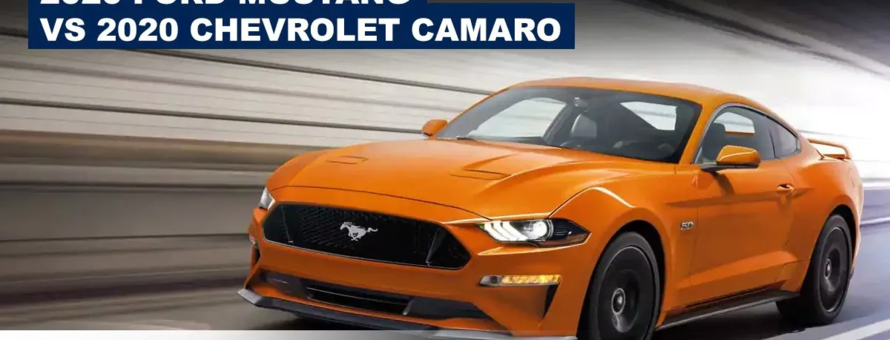2020 Ford Mustang Vs. 2020 Chevrolet Camaro
Sports cars are present in our landscape, and enthusiasts are increasingly fond of performance and thrills on Quebec roads. Many experts have commented on the value of these vehicles, but the vast majority seems to opt for one of the two vehicles in this blog. Before revealing what seems to tip the balance in favour of one over the other, let's take a look at the characteristics of these two cars.
Blainville Ford on the North Shore of Montreal near Laval, Terrebonne, Saint-Eustache, Sainte-Thérèse and Saint-Jérôme compares for you the 2020 Ford Mustang and the 2020 Chevrolet Camaro.
Let the Game Begin!
First of all, if you've ever sat in a Camaro, you may have noticed that visibility is probably its biggest flaw, since you can't see very well and close up compared to the Ford Mustang, which offers a much steeper angle of vision for a sports car; and visibility is undoubtedly an important asset for negotiating corners, but also for seeing far away.
In addition, the Mustang has a more powerful engine than the Camaro, a 5.0-litre V8 engine with variable valve timing, a solution that's not available in the Chevrolet Camaro. While the legendary Mustang spits out 460 horsepower and 420 lb-ft of torque in its GT version, the Camaro SS develops 455 horsepower and 455 lb-ft of torque. On the other hand, the Camaro Zl1 with a 6.2-litre V6 engine offers 650 horsepower and 650 lb-ft of torque, and the Mustang GT500 offers a 5.2-litre V8 supercharged engine with 760 horsepower and 625 lb-ft of torque. In terms of performance, the Mustang outperforms its rival, with statistics to prove it.
While the Camaro is a little lighter than the Mustang, in practice, that translates into a tenth of a second less to accelerate from 0 to 100 km/h, according to the automakers' data; that's 4.2 seconds for Chevrolet and 4.3 seconds for Ford, but with a ten-speed automatic transmission, the Camaro now arrives on the line in 2020 with the start command that the Mustang already had, which suggests that Chevrolet still seems to be following in Ford's footsteps and offering very high performance.
Besides, Ford is far superior in the balance between sportiness and comfort, with more direct steering response and adaptive shocks, which the Camaro doesn't have; it is firm in the corners, but can be adjusted for a smoother “footprint” since there are six driving modes. As with the Mustang, the Camaro's transmission and steering can be adjusted to produce less momentum, but the shocks can’t. Thus, due to less effective damping, impacts on imperfect ground are permanently transferred to the cab and, therefore, to the person sitting in it.
The Mustang's sporty and technological content is also superior to that of the Camaro, and only Ford has an adaptive cruise control system in addition to the magnetic dampers. There's also Line Lock, which blocks the front wheels and a system that alters the exhaust sound.
Chevrolet counteracts with the electric parking brake (manual for Ford) and the sunroof. The Camaro is analogue, with a central TFT screen and there's a configurable head-up display (it projects dashboard information onto the windshield so the driver doesn't take his eyes off the road) that even shows lateral acceleration. Ford's Multimedia Centre, with its in-panel display, is easier to use than Chevrolet's, which is located on the centre panel. In short, the best driving position is easier to find on the Mustang, which offers wider seat height adjustment and controls that are within easier reach.
All in all, even the experts in the 2020 Car Guide give the Chevrolet Camaro an overall score of 73% compared to 81% for the Ford Mustang; a score that talks by itself!





